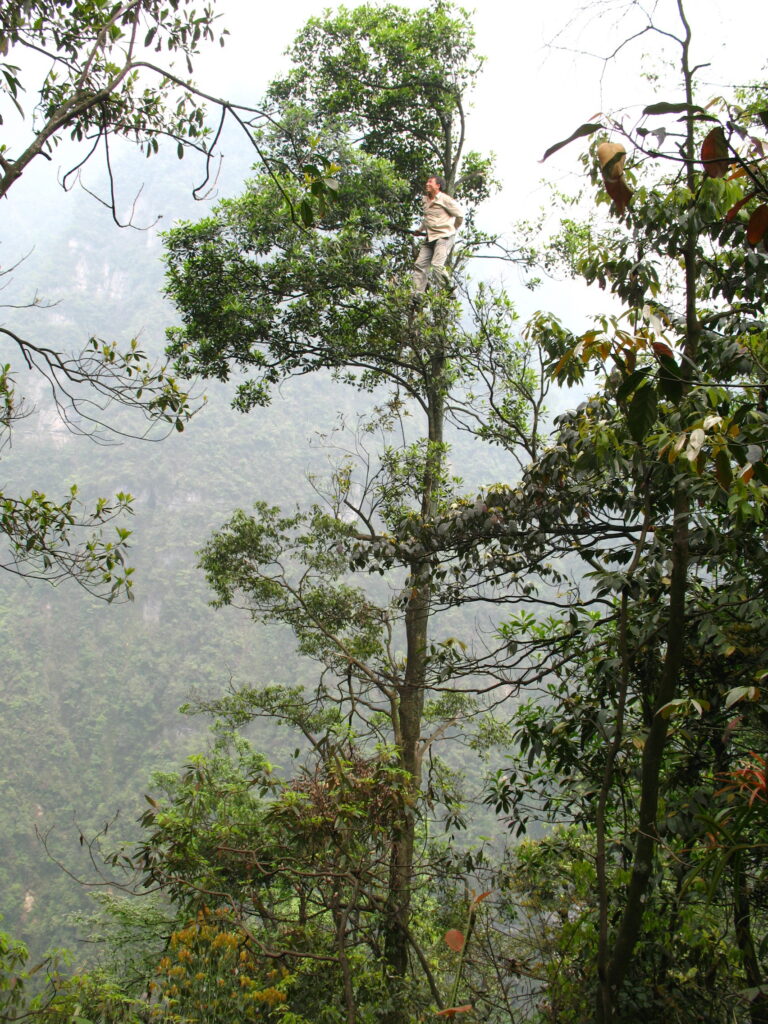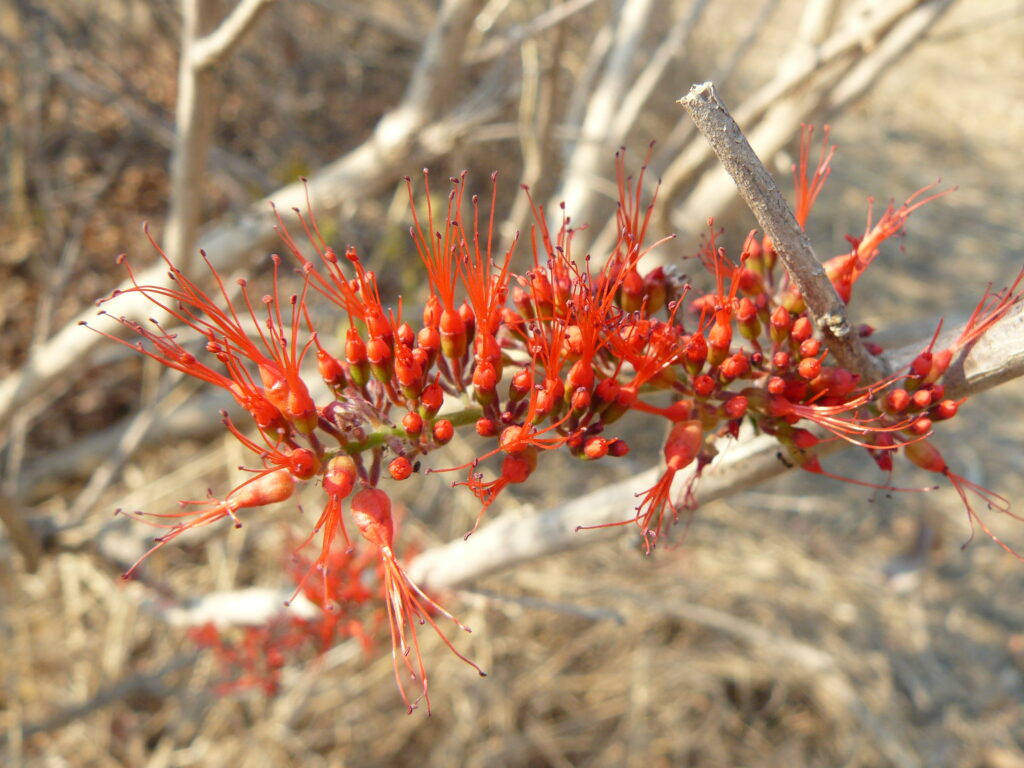
Introducing
Biodiversity Impact Credits
Tradable biodiversity credits for species conservation
What are Biodiversity Impact Credits?
Biodiversity Impact Credits (BICs) enable all types of organisation to:
- Measure their impact on global extinction risks
- Mitigate impact in a scientifically robust way
- Engage with world-class conservation partners in biodiversity recovery
Biodiversity Impact Credits offer a solution for organisations that want to mitigate their impact on species extinction risk, and provide an auditable mechanism delivered through world-class conservation practitioners. The market for BICs will stimulate investment from corporations, banks, asset managers, governments, and others to fund the recovery of populations of threatened tree species in the wild.
Barriers to biodiversity credits and compensatory packages include (1) a lack of accountable biodiversity conservation projects designed to integrate into financial systems; (2) uncertainty about how to quantify biodiversity impacts in the business context, especially in view of biodiversity’s multiple components; (3) concerns that established metrics reveal mostly negative impacts of business activity on biodiversity, which discourages disclosure.
BICs address all of these challenges, and also create benefits for organisations and individuals who invest in them, including:
- quantitative positive impacts on biodiversity
- full transparency
- charismatic, positive stories
How are biodiversity impacts measured?
Both positive and negative impacts on mean global long-term species extinction risk can be quantified using commonly used metrics. These These include well-known measurements of biodiversity impacts along supply chains and product life cycles, such as:
- Biodiversity Footprint for Financial Institutions (BFFI)
- Potentially Disappeared Fraction (PDF)
- The Living Planet Index (WWF and ZSL)
- Range-Size Rarity (widely used in conservation ecology)
For example, the University of Oxford conducted a comprehensive assessment of biodiversity losses associated with activities at the University of Oxford, UK. They used data on purchasing, travel bookings, utility bills and other information from the 2018–19 and 2019–20 academic years to calculate a biodiversity impact of -1.6 species.
How can biodiversity impacts be mitigated?
Biodiversity Impact Credits package up tree species recovery projects into biodiversity credits that are calculated and measured by a simple formula:
Change in population of tree species caused
Current global population of tree species
= Number of Biodiversity Impact Credits
BIC Calculator
This equates to Biodiversity Impact
Magnolia omeiensis
As an example, in 2016, the Critically Endangered Chinese tree species Magnolia omeiensis was down to just 76 individuals left in the wild. Since then, 924 saplings have been reintroduced through a recovery programme meaning that the total population in the wild now is 1000 trees. Applying the formula above to this species, this equates to:
924/1000 = 0.924 Biodiversity Impact Credits
The recovery programme added 924 trees to the original number of 76, making the current population 1000 trees. That recovery programme is therefore worth 0.924 BICs.

Widdringtonia whytei
The Critical Endangered Mulanje cedar, the Malawi’s National Tree, occurs naturally only in the Mulanje Mountain Biosphere Reserve in South East Malawi. Cedar forest cover has declined drastically in the last thirty years and as a result, in 2014 only 7 mature individuals remained. After 5 years of project, 500,000 seedlings have been planted, with around 100,000 trees surviving in the wild. That brings the population in the wild to 100,007 trees. Applying the formula above to this species, this equates to:
99,993/100,007 = 0.99986 Biodiversity Impact Credits

Advantages of this approach
There are several advantages to measuring biodiversity impacts in this way:
- Unlike other biodiversity credit schemes, BICs measure impacts on extinction risk, i.e., the most fundamental form of biodiversity loss. Other metrics focus on surrogates for biodiversity, such as area conserved or indicator species, or less well-defined aspects of biodiversity, such as ‘intactness’. These measures, depending on the location, are not easily comparable across systems and contexts and therefore less suitable for an efficient global credit market.
- BICs are simple to measure. There is only one metric – the number of trees of a given species.
- Native tree species are useful for wider biodiversity because they are keystone species, upon which thousands of other organisms (birds, mammals, insects, fungi, lichens etc.) depend in their life cycles. There is no need to measure the biodiversity of all these other organisms, just their hosts – the tree.
BICs available to purchase
The Global Tree Assessment and IUCN Red List of threatened species lists more than 17,500 tree species that are threatened with extinction, with examples in nearly every country in the world. BGCI has comprehensive checklists of threatened tree species, country by country, and a sample of candidate threatened tree species, whose recovery can be credited as BICs are listed on this website [on the species on the brink pages].
Why work with us?
BGCI is the world’s largest plant conservation network with over 875 institutions and 60,000 experts in more than 100 countries.
BGCI’s network of botanical and forestry institutions includes: globally significant living plant collections, covering approximately a third of known plant diversity; world class seed banks, glass houses and tissue culture infrastructures, and; technical knowledge networks covering all aspects of plant conservation policy, practice and education. BGCI leads the Global Tree Assessment, which is putting IUCN Red List assessments in place for all of the world’s tree species. We also have extensive experience working with partners across the world to design and deliver targeted conservation action for threatened tree species.
Our members include the largest, most renowned botanical institutions on the planet – Atlanta Botanical Garden, Fairchild Tropical Botanic Garden, New York Botanical Garden, Missouri Botanical garden, Royal Botanic Gardens Kew, Shanghai Botanical Garden, Singapore Botanic Gardens, and the Royal Botanic Garden Sydney – and they also include many smaller botanic gardens in the world’s plant diversity hotspots.
Our network has a proven record of working with local, national and international leadership to conserve and protect tree species and to restore the ecology of landscapes. Examples of trees we have recovered from the threat of extinction are listed here, and a synthesis report of the results of our tree species recovery work, covering >400 species over the past 15 years can be downloaded here.
BGCI has the people, facilities, and knowledge to prevent tree species extinctions, and we cover all areas of project planning, design, implementation, and reporting. Third-party monitoring and audit are also available. More details of the services we provide are here.

Frequently asked questions
Yes, BICs are listed as a biodiversity credit option for species with small populations by the Taskforce on Nature-related Financial Disclosures (TNFD) in their Locate, Evaluate, Assess and Prepare (LEAP) methodology.
No. BICs do not attempt to offer like-for-like mitigation. Put another way, if your company or organisation has a negative biodiversity impact, it is usually not possible to define which species have been affected. Thus, recovering a tree species through BICs is a compensation rather than a like-for-like offset.
Costs of tree species recovery will vary from species to species and country to country but average out at $100,000 per year for 5-6 years until the trees are established in the wild.


